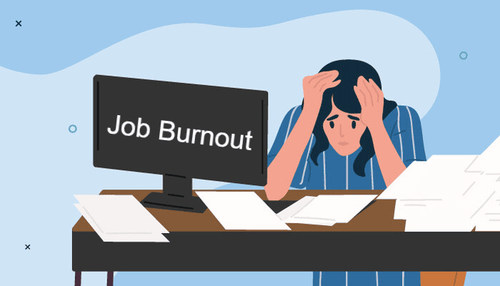This is an automatically translated article.
Article written by Psychologist Unit of Regenerative Medicine Clinic and Educational Psychology - Vinmec Time City International Hospital
Burnnout syndrome - Burnout is an important work-related disorder of psychosocial origin, caused when working conditions are excessively stressful. The concept of Burnnout was first used by Freudenberger in 1974 to describe a state of burnout (usually emotional and mental).
The consequences of burnout are described in terms of physical symptoms such as frequent headaches, insomnia, digestive disturbances, shortness of breath, and behavioral symptoms such as frustration, frustration, and cynicism. These manifestations often appear in people who work too much, too long, too intensively.
According to Maslach and Leiter, burnout is a chronic psychological stress response of individuals at work, the three main causes of this reaction are emotional exhaustion, cynical feelings of detachment from work and feeling inefficient - lack of fulfillment. Among them, the most prominent feature of Burnnout syndrome is increased mental exhaustion.
World Health Organization WHO has declared burnout as a common problem noted in the International Classification of Diseases, with symptoms described as being caused by chronic stress in the workplace that is not well controlled consists of three factors: feeling drained, mentally apathetic at work, and performing poorly in the workplace.
1. Structure of Burnout Burnout Syndrome
From the studies of Maslach et al., which provided an assessment tool for burnout, the MBI scale (Maslach Burnnout Inventory) contains three ranges of assessment of aspects of job burnout that are believed to be reliable, valid and easy to manage.
MBI scale is built including 22 items with 3 aspects: Emotional exhaustion, cynicism and reduced personal achievement, items written as expressions of personal feelings or attitudes. For example: “I feel exhausted with my work”, “I really don't care what happens to some other people”. The items are freely answered according to the degree of choice that the respondent experiences this feeling on a 7-point scale (from 0: Never to 6: Every day")
Emotional exhaustion: Includes 9 items, rate sensory evaluation is over-dominated and impaired by one's work. Skepticism: Five-item, measuring unwarranted insensitivity, aloofness toward service recipients or co-workers. Reduced personal performance : 8 workplace performance items that describe feelings of inadequacy Some content of the MBI scale can be consulted:
I feel tired at the end of the work day I feel tired tired of waking up in the morning and facing work I am frustrated with my job Working with people is too stressful for me I worry that this job makes me uncomfortable emotional aspects MBI- HSS, MBI-ES, MBI- GS versions designed and developed later are built based on the respective subjects and occupations and are used in many countries showing their reliability. reliability of the scale.

2. Factors affecting occupational burnout
Occupational burnout is affected by many factors, the field of occupational activity, occupational characteristics and demographic characteristics are the most influential factors:
A person's occupational activity field: Most of the research focuses on subjects operating in the following sectors: medicine, education, factory workers, human resource managers, entrepreneurs, athletes, supervisors, support consulting profession. Objects of doctors, nurses, and teachers appear quite a lot in research in most countries. Occupational characteristics: The impact of occupational characteristics on a person's fatigue is relatively large. High-stress occupations such as doctors, nurses, teachers, and workers are affected by demands, job duties, contact with people, chemicals, and time stress. Demographic characteristics: Demographic characteristics such as ethnicity, country, gender, age, number of children, education level, marital status, social status, position/rank in workplace, work experience... all affect an individual's fatigue.

3. Ways to prevent occupational burnout
Some ways to prevent Burnnout burnout syndrome are as follows:
Build healthy relationships at work Use breaks rationally and effectively, participate in cultural activities at work. workplace Choose a career, a workplace that suits your interests and needs. Balance between work and rest time. Participate in arts, entertainment, and sports to promote physical health and health in a healthy way For those who show signs of depression, exhaustion, and fatigue, seek help from a doctor, psychologist or share with friends and colleagues for solutions and support.
Please dial HOTLINE for more information or register for an appointment HERE. Download MyVinmec app to make appointments faster and to manage your bookings easily.













